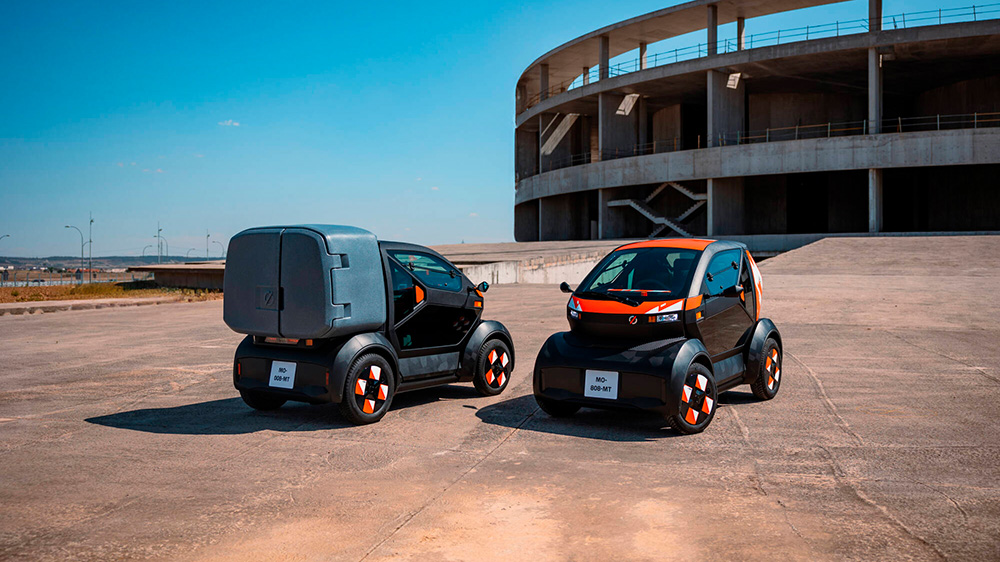A new kind of road map for the mobility sector has been published across the Atlantic. The World Economic Forum and the city of Los Angeles laid out seven principles for ethical urban air mobility. Is this the last step before we’ll be able to get around cities… through the air? In any case, interest in the aerial transport sector is building: transport builders and manufacturers are seeking out more partnerships and increased funding, working to improve technology, and are well on their way to turning the sky into a new space for clean, quiet transport.
CHALLENGE 1: democratising urban air mobility
After 20 years spent developing the technology that’s allowed us to explore Mars, asteroids, and deep space and earning a PhD in ion research from NASA, Anita Sengupta worked at Virgin Hyperloop as Vice President of Engineering Systems. Her impressive career path paved the way for the creation of Airspace Experience Technologies, which she co-founded. Based in Detroit, A.K.A. The Motor City, and historic capital of the American automobile industry, this startup is working to design the future of aerial mobility.
According to the Roland Berger consulting group, this sector will be worth 80 billion dollars per year by 2050: “To start with, we think aerial services will be quite highly-priced and exclusive, but in the longer term as operating costs evolve, it will be more like today’s premium public transport services, such as taxis,” says Manfred Hader, director of Roland Berger’s aerospace and defense practice. These taxis are exactly what Sengupta is working on. This certified rocket scientist promises we’ll have on-demand flying cars that will get you to your destination five times faster for the same price as an Uber ride—and in just a few years from now.
CHALLENGE 2: solving the economic equation of the car of the future
Safer, cleaner, and quieter than helicopters, these flying vehicles would also be capable of carrying more passengers. The result, according to British consulting firm Ayming, is that more than 100 companies are currently working on the development of electric vertical take-off and landing (eVTOL) aircrafts. These include Sengupta’s company, which joined forces with global aircraft manufacturer Spirit Aerosystems to develop Mobi-One, a quiet, eco-friendly aerial transport vehicle that will be able to carry up to five people at a time.
Their goal is to mass-produce vehicles and minimise costs before Mobi-One arrives on the market. The first challenge aerial vehicle makers will face is how to commercialise these futuristic mobility services. Flying is expensive: Japanese company SkyDrive is planning to sell its two-seater VOLT, scheduled to arrive in 2023, at anywhere from $300,000 to $500,000. German startup Volocopter offers 15-minute rides for $354. And then there’s the question of energy storage. Specialists say that achieving the level of battery autonomy necessary to run vehicles like these will require us to develop new, higher-cycle lithium-ion batteries. Both engineers and cities are also concerned about security: how do you avoid collisions and traffic jams in the air? According to an article featuring Sengupta in the Financial Times, “They would not be crowded with air taxis zooming along in proximity… aerial taxis would need to be properly spaced for safety… with ‘an airspace bubble’ around them in case of emergency. Take-off times would be regulated, possibly by an air traffic control system that would have human overseers as long as safety considerations required it, before eventually becoming autonomous.”
CHALLENGE 3: registering the aerial car in the regulations
Further challenges exist in this space race around safety certification and infrastructure. What kinds of standard regulations should apply to eVTOLs? Where will they take off and land in large cities full of skyscrapers? And that’s all to say nothing of what the public’s enthusiasm will be for transport like this. “Generally speaking, the use of urban airspace means there will be less pollution and a more pleasant environment for pedestrians,” predicts Sengupta. It’s a strong argument that could help convince everyday citizens to climb aboard an aerial electric taxi in the future, from an engineer who likes to regularly remind people that “the sky is not the limit—only the beginning.”
Sarah Sabsibo, L’ADN journalist
L’ADN is the media on innovation that every day analyses the best concepts of the new economy on the web and in magazine format.
Copyright: Lloyd Horgan, iflyasx.com






